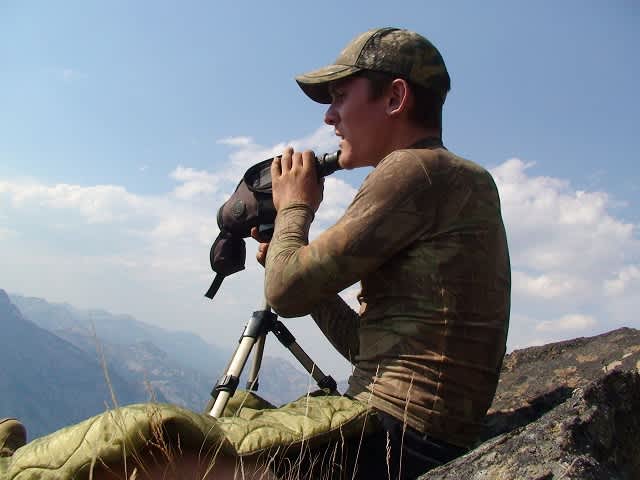Use Personality Traits to Harvest Mature Bucks: Part One
Cliff Hunter 01.09.12

Alpine buck age classes
Alpine bucks are not all the same – and this fact is not to be taken lightly. They can be grouped by age, and then again by personality. Yes that’s right, I said personality. Most toddlers can’t use the toilet (age class trait), but only so many like to hit, or cuddle with the dog, or have screaming contests (personality). But for now let’s just explore some of the traits of each age class.
Class One: Greenhorns, first timers, rookies; whatever you wish to call them. They are young and dumb and stick together in the hills. They wander at random times of the day and visit water more often. When these young bucks are hanging out with older bucks they will almost always get stuck bedding out in the sun or in hotter beds when shaded spots are limited.
Class Two: Middle age bucks are a couple of years older. They have seen the world, they know not to underestimate their predators, and they are nervous – all the time. They will rarely sleep in the middle of the day, and are constantly moving around and surveying their surroundings.
Class Three: Then there are the elites, the dominant bucks, those bucks that are right at their prime and a bit cocky about of it. They know the mountains well and use everything to their advantage. They are relaxed and will often lay their heads on the ground and sleep soon after laying in a new bed. It’s not uncommon to see a doe without a fawn hanging out with these bucks on the upper slopes. They know to duck and hide when danger is afar, and to never return to an area if they have seen danger there before.
Class Four: Lastly there are the old bucks, the regress bucks, the ones sporting thick, knobby antlers with plenty of trash. Generally these old boys are overweight and lazy. They don’t like to move unless it pays off in food, safety, or sex. They know the land better than the rest and are often the hardest to find. Once you do find one of these old dogs though, they are the easiest to pattern and stalk. Unlike younger bucks, these guys follow a much tighter routine. Their old age has made digestion harder and their rumen larger, so they spend more time in each bed chewing and re-chewing their cud until it is small enough to exit the rumen and enter the rest of the digestive tract, and finally allow for another meal to be consumed. In their beds their eyes droop with lethargy and loose skin folds over their legs. When danger appears they are slower to react and will think twice before jumping from their bed in a full sprint.
The right buck
Stalking a buck is very hard on your body – and mind if you are unsuccessful. After a failed stalk it is common to be deathly dehydrated, sore, hungry, and ticked off. To shake that off and go on another stalk is not an easy thing to do. That is why it is very important to choose your battle wisely and stalk the right buck, in the right situation.
Aren’t all high-country bucks good bucks? You bet they are! But they are not all equally hard to kill. Some bucks are very hard to kill because they are paranoid, only bed for short periods of time, and hang out in groups more often etc. That kind of sounds like a young forked horn or three-point doesn’t it? You got it. I would say a young buck is harder to kill in the high country than an old sway-back. That works out pretty good for the hunter now doesn’t it. The only exception are the class 3 bucks that have big horns but are still edgy. It’s up to you if you want to take one of these on, but if you can find an even older buck you will have a much easier stalk.
Why old bucks are less difficult to kill:
- More relaxed (In bed and when feeding)
- Bed for longer periods of time during the day (longer time to digest food)
- Feed later in the morning (easier to locate)
- less social (hang out on their own more)
- Hold their ground when danger approaches (hoping it will pass)
- Don’t “jump the string” (slower reaction time)
To continue on to part two of the Cliff Hunter’s guide for using personality traits to hunt mature bucks, click here.


